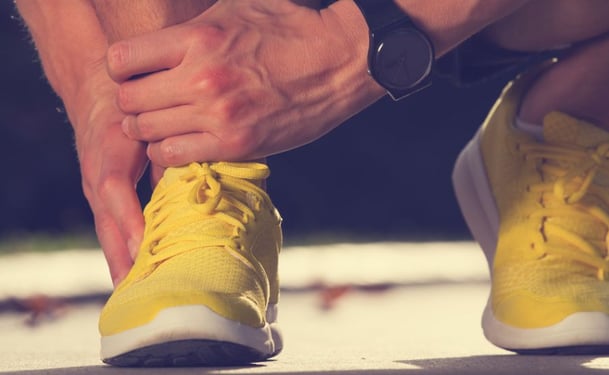The skin condition known as athlete's foot is one of the most common chronic fungal conditions reported by American patients. Athlete's foot, also called tinea pedis, is actually a fungal infection. It’s one of several different types of the same condition that manifest in different places in the body. Some people don’t realize that athlete's foot is actually a similar condition as ringworm, or tinea corporis, where there is actually no “worm” involved. Finding out more about this unpleasant condition can help you avoid it or deal with it as it occurs
Athlete's foot has a variety of common symptoms that help patients understand whether they are experiencing this fungal condition. Most of these are somewhat standard, but athlete's foot can also manifest in different ways, so it’s best to know a bit about both primary and secondary conditions associated with it.
Dry, Scaling or Flaking Skin
One of the first symptoms of athlete's foot is often a change in the surface of the skin, particularly around the toes, or at the heel of the foot. The skin may become dry and papery, as well as flaking or scaly. This will be evident, and it’s one of the most visibly disturbing aspects of a chronic case.
Burning and Itching
Along with the above symptoms, lots of patients will experience a burning sensation or an itchiness in the affected areas. This will get worse as the fungal infection progresses. The nerve sensations involved in athlete's foot are often the prime reason that patients seek topical treatments to control this condition before it gets out of hand. These sensations can be maddening, but some topical treatments help soothe the worst of these symptoms.
Nail Discoloration
In some patients, athlete's foot produces nail discoloration. In extreme cases, toenails can fall off or become blackened. This symptom is usually avoidable with prompt treatment.
Soreness
Some patients with athlete's foot experience soreness in the general areas before they start experiencing changes in the skin itself. This can clue an individual in that they may have contracted this fungal condition.
Blistering
In some kinds of athlete's foot often called vesicular athlete's foot, one of the first symptoms is a series of blisters in the general area.
If you are worried about athlete's foot, you can take some commonsense precautions to limit your exposure to it. Athlete's foot is a contagious condition that people get from sharing surfaces with other infected individuals. Make sure to wear footwear in public spaces including hotels, gym showers, campgrounds and other areas where you could come in contact with athlete's foot. Talk to your doctor if you start experiencing any of the above symptoms to see if your condition is athlete's foot or something else that needs different treatment. Although athlete’s foot can be tenacious, working with your doctor should help you control it in the long run.



